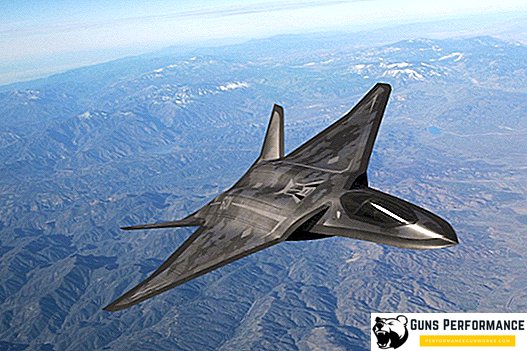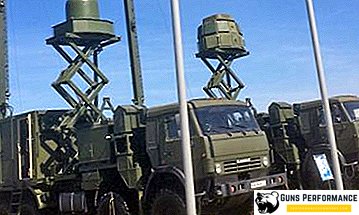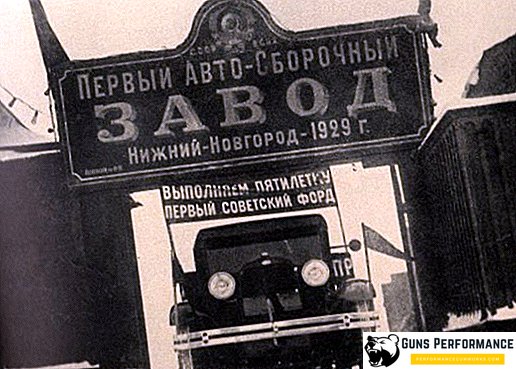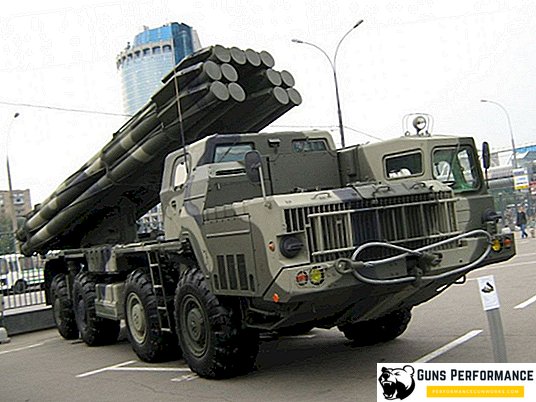
Today, combat aircraft is the most important factor, which largely determines the outcome of any military conflict. Most experts believe that this pattern will continue in the near future. Victory in the upcoming wars will be won by a side with more sophisticated and numerous air force. Their most important component is fighter aircraft.
Fighters can be divided into generations, depending on their flight performance, defining a set of features and characteristics of each aircraft. To date, there are five generations of fighter jets, and only one country in the world, the United States, was able to launch serial production of fifth-generation vehicles. And in the race for the fifth generation, Americans are still leading by a very significant margin, although work on the creation of a fighter of a new generation is being actively carried out in Russia, and China, and in Japan.
It should be noted that the majority of the world's air forces are still costing the previous, fourth generation vehicles perfectly capable of solving the main tasks of aviation in a modern war. And the poorer countries still use older planes.
Therefore, discussions about the fighter of the sixth generation so far look to some extent speculation. The media from time to time publish materials (and even photos) of new combat vehicles, the development of which supposedly is underway. Usually in such articles are scraps of statements by high-ranking officials of the Pentagon or the Russian Ministry of Defense. The description of the aircraft themselves is reminiscent of a fantasy film script: hypersound, artificial intelligence, laser weapons.
So far, military experts cannot clearly answer the question: why is this the sixth generation needed? What tasks will these fighters perform? What new tactics will they do?

The emergence of fighters of each new stage was associated with a significant increase in the level of development of world aviation science and technology. The airplanes of the new generation had revolutionary combat capabilities, which allowed the military to master new tactics and gain significant advantages over the enemy. The introduction of new type of combat vehicles took place at about the same time in different countries, the designers generally used similar technical solutions and similar materials.
It should be noted: the creation of a fighter of a new generation is insanely expensive. The cost of one serial F-22 Raptor is 146.2 million dollars, and in general, the program for the creation of this aircraft Americans spent almost 67 billion dollars. There are very few countries on the planet that can afford such expenses.
Before proceeding to the description of the possible characteristics of the sixth generation fighter, a few words should be said about the five previous generations and the criteria on which this gradation is based.
Generations of fighters
There are several classifications of fighter generations, and there is no single agreement on this issue, and there is no clear categorization, which often leads to disputes regarding the ownership of a particular aircraft or its modification. The most common classification is as follows:
First generation. These are jet fighters developed in the 40s and early 50s. Airplanes of the first generation - subsonic fighters, without airborne radar, equipped only with radio sight. Another characteristic feature of the generation is the straight wing. Typical representatives of this group of machines are Messerschmitt Me.262, De Haviland Vampire, Yak-15, MiG-9.
Second generation Fighters of this generation were created in the 50s and in the early 60s. They are characterized by the following features: near-sonic or supersonic flight speed, presence of a radar, swept wing, turbofan with an afterburner, significant flight altitude. The following vehicles belong to this generation: MiG-15, MiG-17, F-86 Saber, Dasso Mister. These machines were considered modern until the mid-60s, but were used in the 70s.
Third generation Airplanes of this generation could develop supersonic speeds (up to 2 Machs), received air-to-air missiles and a more advanced afterburner turbojet engine. Third generation fighters can be called multipurpose vehicles. A typical representative of this group are the Soviet MiG-21 and the American F-4 Phantom fighter. This includes such machines as the MiG-23, the French Mirage F1 and the Swedish Viggen.
Fourth generation The transition from the third to the fourth generation is associated with a significant technological breakthrough, it occurred approximately in the first half of the 70s. Airplanes of this group are distinguished by statistical instability with the use of EDSU, a dual-circuit engine, guided weapons, and advanced avionics. Fighters of the fourth generation have a significantly higher maneuverability compared with the third-generation machines, they were able to use over-range weapon systems. The first fighter of the fourth generation created the Americans - it was the F-15. The debut of these cars (the Lebanon war of 1982) showed their considerable superiority over the aircraft of the previous generation. The Soviet response to the creation of the F-15 and F-16 was the development of MiG-29 and Su-27 fighters. The latest modifications of the MiG-29, Su-27, F-15 and F-16 are usually divided into a separate group, which is usually called the 4+ generation.
Fifth generation The development of these machines began in the USSR and the USA back in the 80s of the last century. However, due to the collapse of the USSR, the Americans were able to significantly advance. Today there are two fifth-generation fighter jets: the F-22 Raptor (adopted in 2005) and the F-35 Lightning II (2015). The Russian fighter PAK FA has been at the testing stage for many years now; development in this direction has been conducted in China and Japan. The main features that the fifth generation aircraft should have are: widespread use of stealth technology, equipping the aircraft with an active phased-array radar, super-maneuverability, the ability to achieve supersonic speed without turning on the afterburner, new aircraft control systems and weapons.

What will be the sixth generation fighter
Modern fighters of the fourth generation are fully capable of solving most of the aviation tasks on the battlefield, and after modernization they can even give battle to fifth-generation aircraft. What are the characteristics should have a sixth generation machine to justify the resources spent on its development?
Probably, it will be even less noticeable for the enemy radar and be even more manoeuvrable compared to existing aircraft. For this, the fighter will be equipped with an engine with a deflectable thrust vector.
Most likely, there will be a rejection of the vertical tail. It significantly increases the effective scattering area (EPR) of the aircraft, and, moreover, the vertical tail is almost useless when maneuvering at large angles of attack. For super-maneuverable modern aircraft, critical and supercritical angles of attack, at which the vertical tail is ineffective, are increasingly becoming the main mode.

A vivid illustration of this trend is the F / A-XX aircraft developed by Boeing. Sketches of this car were shown to the public in 2008.
6th generation machine layout
Most likely, the next generation fighter will have an unusual layout scheme. "Flying Wing" has long ceased to be a novelty, but it is likely that we will see the aircraft even more outlandish appearance. In the mid-1990s, the Boeing Corporation developed a prototype of the inconspicuous Bird of Prey fighter bomber. This aircraft was built according to the "duck" scheme, however, it did not have PGO, the functions of which were carried by the carrier fuselage. This form of the aircraft had all the advantages of the duck scheme and made it possible to avoid its inherent drawbacks.

When creating Bird of Prey, the latest technologies and materials were used, including 3D printing.
Another prototype of the future fighters was the American LA X-36, the first flight of which occurred in 1997. This aircraft supposedly taken from the props for the next sequel to "Star Wars". The machine has no vertical tail, equipped with thrust vectoring engines, the shape of this aircraft makes it minimally visible on radar screens. It is the inconspicuousness at the present moment that is one of the main means of protection for fighters and the main guarantee of their survival.

True, stealth technology often leads to a deterioration in the flight qualities of aircraft and always sharply increases the price of production of the aircraft and its operation.
6th generation fighter flight characteristics
One of the main features of the fifth generation of fighters is a formless supersonic flight. Naturally, this function will continue in the next generation of aircraft. Probably, their thrust-to-weight ratio will be even higher (up to 1.4-1.5), which will allow the machines to come close to hypersonic speeds and increase the flight altitude to 30-35 km.
Flying and maneuvering at such speeds are already approaching the limits of the human body. This results in new requirements for the onboard equipment of the new fighter.
Today, multi-functional LCD screens and helmet-mounted target indicators have become familiar. You can recall the project "transparent cab", developed in Israel. But this is not enough. The on-board electronics should give the pilot the most important information, determine the priorities of the targets, suggest the best way to destroy them and the optimal maneuver in combat. That is, the plane must have to some extent its own intelligence. Here we come to one of the most important issues concerning the next generation fighters: whether they will be controlled by man at all.
Modern UAVs for the most part are also controlled by man, it happens remotely. If we talk about the unmanned fighter, then he must be able to operate completely autonomously, following the instructions of the onboard computer. Today there is a situation when the on-board computer controls not only most of the piloting of the fighter, but also the use of weapons. If necessary, the electronics will perform an evasion maneuver from an enemy rocket, or even lead the plane to the base and land on the runway.
All this leads to the question of the appropriateness of the presence of a person in the cabin.
On June 27, 2018, an interesting experiment was conducted at the University of Cincinnati (USA). An experienced pilot and computer came together at an aviation simulator. The car was confronted by retired US Air Force Colonel Jin Lee Focus. The pilot never managed to beat the computer. Later, the colonel noted that his electronic opponent showed a faster response and always chose the aggressive and most effective tactics of the battle.
The human brain can process only a limited amount of information and makes it a hundred times slower than a machine. This should add the physiological limitations of the human body. Perspective aircraft can withstand overloads several times more than a person is able to survive. In addition, an autonomous apparatus does not need life support systems, evacuation, a variety of instruments, and so on. The refusal of the pilot will make it possible to build planes easier, smaller, and much more maneuverable than modern machines.
True, there is an essential moral aspect: are we ready to delegate the right to kill people to an inanimate car? Nevertheless, as the new and recent history shows, the military is not too “bother” with moral issues, so when IN will be really ready to take control of a fighter, then the fighter pilot’s profession will immediately be a relic of the past.
Will the sixth generation aircraft be equipped with laser weapons? Judging by the latest developments in this area, it is unlikely. Modern lasers are too bulky and weak to install them on a fighter. But it is not excluded the use of auxiliary laser onboard systems - for target designation, defense, etc.

The newest fighter of the fifth generation is not just a separate combat unit, but part of a single information-combat system, which greatly increases its effectiveness. In the next generation of machines, the degree of integration will clearly become even greater. The aircraft receives information and target designation not only from the on-board systems, but also from satellites, other aircraft (including DRLO), ground-based radar and UAVs. A modern fighter can attack a target that he does not even see.
Summing up the above, it can be noted that the time of the sixth generation fighter has not yet come. Spent technologies that would provide a breakthrough have not yet accumulated. In addition, it is likely that air defense systems will progress faster than aircraft technology (they are much cheaper to cost), so it makes no sense to invest in the creation of new and very expensive fighters.













